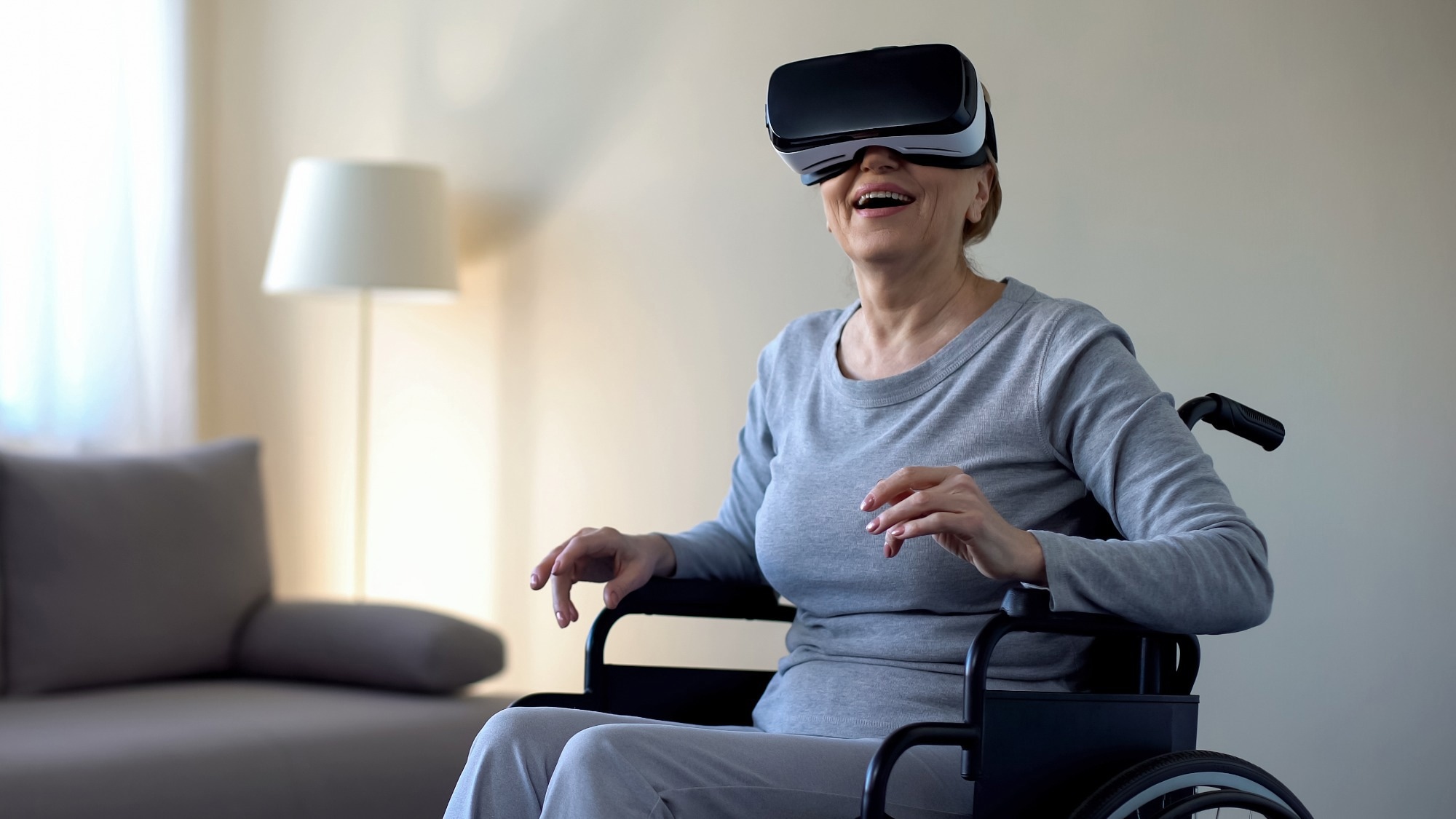Effectiveness and safety of virtual reality rehabilitation post-stroke
In a recent article published in eClinicalMedicine, researchers evaluated the effectiveness and safety of virtual reality (VR), an innovative neurorehabilitation modality, in people diagnosed with cerebral stroke.

Background
Over 12 million new strokes occur each year globally. However, by 2050, the global stroke burden may double.
According to the World Health Organisation (WHO) estimates, upper limb impairment, decreased ability to self-care, and social inactivity are common in stroke survivors, which can cause a deterioration in quality of life.
Given the continuous expansion in the number of stroke survivors, there is a need for more engaging, interactive, patient-centered, and relatively inexpensive modalities to enhance functional recovery.
One can access VR via personal computers, mobile devices, VR glasses, and head-mounted displays. It allows a patient to immerse in environments similar to real-world events and objects.
Moreover, they provide real-time feedback through their sensory channels. Furthermore, VR can be non-, semi-, or fully immersive based on the extent of a user's perceived presence and interaction with the virtual environment.
Systems that utilize concave surface projection, head-mounted displays, or video capture are immersive, while single-screen projection or desktop displays where users can interact with a computer-generated avatar are non-immersive. VR glasses that enable users to navigate by a visual stimulus are semi-immersive VR.
VR appears to have the potential to maximize motor learning after a stroke. Many previous systematic reviews uncovered the discordances of VR use on upper limb function (arm and hands) and activity compared to conventional therapy, emphasizing the need for an overview of reviews in accordance with the Cochrane guidelines.
About the study
In the present study, researchers searched 11 databases, e.g., SCOPUS and grey literature, from inception to January 17, 2023, and identified systematic reviews published in English that covered adult patients with a clinical diagnosis of stroke undergoing VR intervention with/without conventional therapy vs. conventional therapy only.
Eligible systematic reviews with and without meta-analysis of randomized controlled trials (RCTs) or both RCTs and non-randomized studies of interventions (NRSI) involved adult patients with a clinical diagnosis of acute or chronic stroke who had motor impairments and were undergoing non-, semi-, or non-immersive VR interventions.
The primary study outcome was upper limb function and activity, and secondary outcomes were measures of gait, activities of daily living (ADL), participation restriction and quality of life, cognitive function, and other adverse events.
Results
The current overview of multiple (n=58) systematic reviews summarized the evidence from 42 meta-analyses, including 345 primary studies on VR intervention used for stroke.
Almost 40% of the trials were published in the last five years, suggesting the need for new evidence to update the available evidence.
Multiple meta-analyses using the Fugl Meyer Assessment scale (FMA-UE) to measure upper limb function and activity found that VR with or without conventional therapy was superior to conventional therapy, with low to moderate certainty of evidence (CoE) and probable to definite clinical relevance.
On the contrary, VR motor rehabilitation did not affect arm activity assessed with the Box and Block Test (BBT), Wolf Motor Function Test (WMFT), and Action Research Arm Test (ARAT).
Some reviews reported equal effects of VR and conventional therapy between study groups. VR might be useful for patients who need to perform a cognitive task but also refine the quality of movement during task execution. Further, VR might have a beneficial effect on mobility, balance, and ADL.
Thus, overall, VR could be considered a safe neurorehabilitation intervention with few mild adverse events. However, there is a need to minimize the risk of falling during balance training.
Conclusions
Clinicians should evaluate ways to incorporate VR into post-stroke rehabilitation interventions for patient's motor recovery.
Depending on a patient's training aims, they could introduce tailored exercises with visual, auditory, and tactile feedback, which might help patients improve performance and personal capacity.
Given the current expansion of knowledge regarding gender medicine and individualized therapy, clinicians should incorporate this research into VR rehabilitation.
For example, higher stress levels might increase female susceptibility to simulator sickness and discomfort during VR. Clinicians should be ready to handle this by defining the type of technology and intervention dose appropriate for each patient.
According to the authors, this is the broadest overview of systematic reviews examining VR as a stroke rehabilitation intervention yet. However, since many of the reviews included in this overview used poor methodological quality, its findings must be interpreted with caution.
- Bargeri S, Scalea S, Agosta F, et al. (2023). Effectiveness and safety of virtual reality rehabilitation after stroke: an overview of systematic reviews, eClinicalMedicine. doi:10.1016/j.eclinm.2023.102220. https://www.thelancet.com/journals/eclinm/article/PIIS2589-5370(23)00397-8/fulltext
Posted in: Device / Technology News | Medical Research News | Medical Condition News
Tags: Chronic, Cognitive Function, Medicine, Research, Stress, Stroke, Technology, Virtual Reality

Written by
Neha Mathur
Neha is a digital marketing professional based in Gurugram, India. She has a Master’s degree from the University of Rajasthan with a specialization in Biotechnology in 2008. She has experience in pre-clinical research as part of her research project in The Department of Toxicology at the prestigious Central Drug Research Institute (CDRI), Lucknow, India. She also holds a certification in C++ programming.